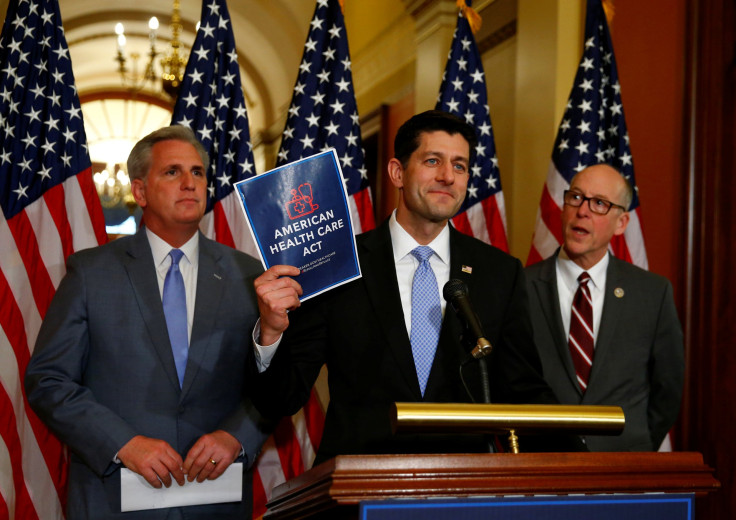Who Will Lose Health Insurance? Obamacare Repeal By Republicans Could Cost 10M People Their Coverage

As many as 10 million people could lose coverage under the Republican plan to replace the Affordable Care Act, a Standard & Poor’s analysis released Tuesday estimates.
The GOP unveiled its proposal to repeal and replace Obamacare on Monday. The American Healthcare Act would taper off the Medicaid expansion, replace subsidies for lower income taxpayers with tax credits, eliminate fines on individuals who do not buy coverage and on companies that don’t offer insurance to their employees, and eliminate taxes on medical devices and tanning.
The proposal retains two of the ACA’s most popular provisions: allowing young adults to remain on their parents’ policies until age 26 and preventing insurance companies from denying coverage to people with pre-existing conditions.
S&P’s Global Credit Portal said the GOP plan would fundamentally change federal financing of healthcare, reducing enrollment in individual policies by 2 million to 4 million, mostly among those ages 45 to 64 because of the cost of coverage, and among Medicaid recipients by 4 million to 6 million. The plan would reduce premiums and likely improve profitability for insurance companies, but the analysis recommends caution in moving from a defined-benefit system to a defined-contribution system.
Currently, 20 million people are covered through Obamacare.
The S&P analysis notes the “entwined” nature of the U.S. health insurance framework, emphasizing its dependence on government funds.
“Currently, over $1 trillion of federal support comes to this market, with most of it akin to a defined-benefit type of financing system,” the analysis says. “From subsidies in the individual market [under-65], to federal funding of Medicaid, to tax deductions in employer-sponsored health insurance, current federal support keeps the health insurance market [dysfunctional as it may be] intact.”
The GOP plan would allow insurers to charge older Americans five times as much as younger Americans for an individual policy compared to the current ratio of 3:1, putting coverage out of reach for many older workers.
President Donald Trump Tuesday signed off on the plan, promised action on drug prices and predicted conservative senators who fear the plan will turn into another entitlement program will come around.
© Copyright IBTimes 2024. All rights reserved.












